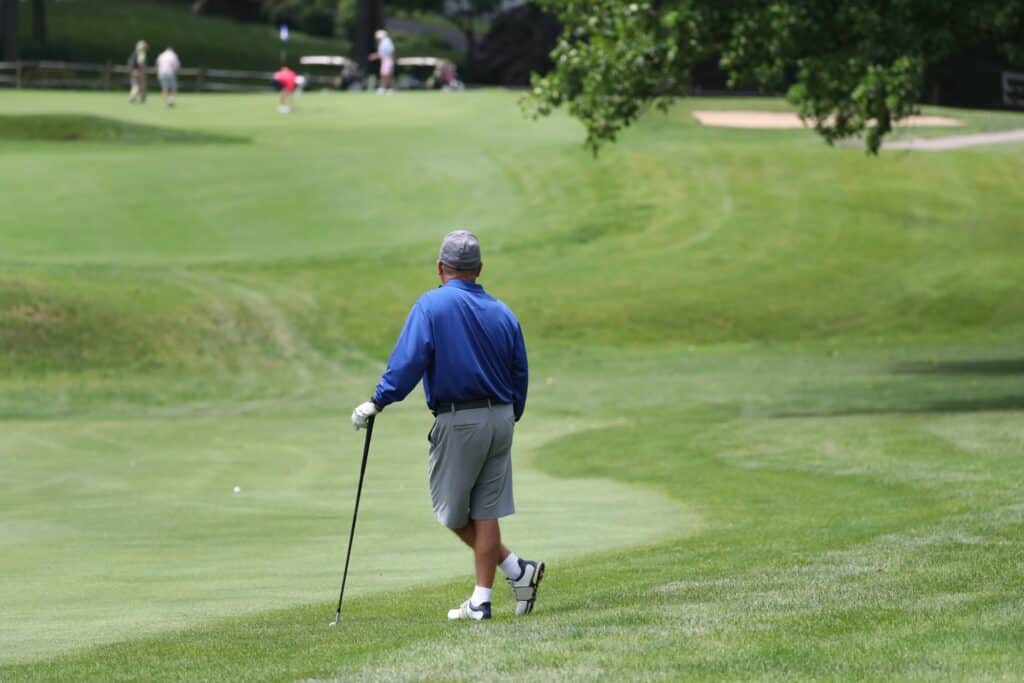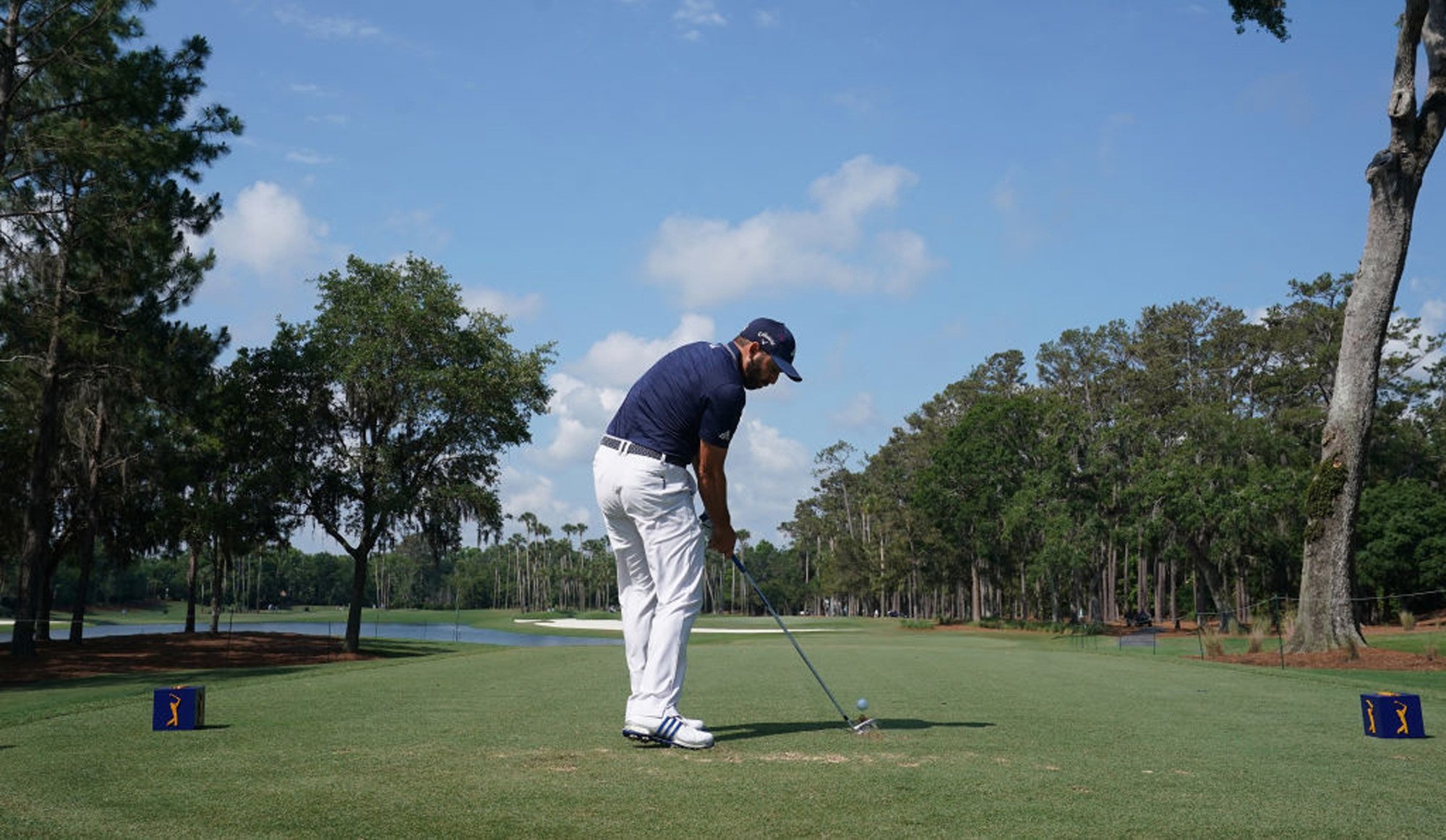Remove $100,000 from Rory McIlroy‘s bank account and he wouldn’t look twice. He wouldn’t look once.
Colli Morikawa literally said as much at The Players Championship:
“What I’ve learned is that monetary fines are useless. We make so much money, and some guys frankly could care less.”
But fury would build in his stocky Irish frame with one glance of a scorecard muddied with a two-shot penalty for slow play.
This is not to say McIlroy is slow. He is a case study from a file of multi-millionaire golfers who don’t run behind the sofa from slow play fines but more recline tilted-head in relaxation.
As is the landscape in golf where players are heinously overpaid and have a distorted view of self-worth, they have become equally numb to picking up paychecks and the prospect of giving some back.
The only language these people speak is golf. A six on a scorecard is like an elephant in the room, and it is only when shot penalties are regularly introduced that players will stampede down fairways instead of slithering.
This issue was never more pertinent at the ANNIKA at the end of the 2024 LPGA Tour season. Carlota Ciganda, arguably the game’s most well-known slow coach, was reportedly docked $4,000 after multiple warnings during a tournament played at the pace of a sloth walking backwards.
[object Object][object Object][object Object]
This didn’t worry the Spaniard, a player with 11 pro wins, seven Solheim Cup appearances and eight major top-10s, because she came tied for 14th and made the limited-field CME Group Tour Championship, playing for the lion’s share of the $11 million purse.
The LPGA has since clamped down on its slow-play policy. A one-shot penalty will be given if a player takes between six and 15 seconds too long, and a two-shot penalty if a player takes 16 or more seconds too long.
Advertisement
The PGA Tour announced a concerted effort too at TPC Sawgrass in March 2025, with boss Jay Monahan revealing new stroke penalty measures would be piloted on the Korn Ferry Tour and PGA Tour Americas.
“The only way you can ever address this is if you give shot penalties, two shots,” Dame Laura Davies told NCG on the matter. “Start with two then if you do it again during the week, four then that blows you out of the tournament and costs you $4 million.
“You’d speed up in a hurry, but these fines are embarrassing because the other guys and girls, the slow players on the LPGA Tour, they get a $1000 fine, and they laugh at it. And there’s no point in making it $500,000. Make it shots and make the players really suffer. One minute you could have a two-shot lead and the next minute, you’re tied because you’re playing slow, or you miss the cut.
“But the slow players are always the slow players and as soon as the officials get in position, they speed up. Someone did – not a proper survey but just jotted down a few players they put under the clock and their score averages were better than when they were playing slowly, so they can play quicker, they just don’t choose to.”

ALSO: Henrik Stenson: Slow play makes it painful to play at St Andrews
ALSO: Slow play nightmares: Can a simple checkpoint end your club’s traffic jams?
‘Make slow play penalties shots and make the players really suffer’
Anyone who has read any part of the PGA Tour’s Pace of Play document might liken it to watching Christopher Nolan’s Inception, or Only Connect on BBC Two. The head-scratching ambiguity of it all, consistent throughout the game and not just on this circuit, leaves no wonder as to why players drag their feet.
Advertisement
At the Players Championship in 2024, I asked five-time PGA Tour winner Sam Burns: In the first round and second round, darkness stopped play before everyone could get around. I was wondering if there was a reason for that or if you had anything to say about that.
His initial answer was both frustrating and representative of the general attitude towards slow play, particularly on the PGA Tour: “A reason for the darkness stopping play?”
I was compelled to elaborate after my understanding of daylight was questioned. Burns explained that putting 144 players on a ‘challenging’ golf course like the Stadium Course at TPC Sawgrass will always cause back-ups. A course I hasten to add has seen winners shoot 17-under, 18-under and 20-under-par since 2018.
Sawgrass will have 120 players as part of the PGA Tour’s changes starting in 2026. Fields are getting smaller with one justification being that play will become faster. While this theory is plausible, there were still slumped heads as the tour also revealed proposals to allow players more time, but up the fines for the slowest.
Like many sports, there is a large gap between what fans want and what players are willing to accept. An ideal world would see a footballer sent off every time they swore at a referee. The first match would become a 5-a-side bloodbath, but the abuse would stop.
The parallel to golf is identical. When the moment is right, hit someone with a two-shot penalty, then another, then another. A bloodbath, sure, but as Dame Laura declared, they would soon speed up and create a more watchable television product.
While we see improved times at some of the limited-field Signature Events where two-balls are the order of the day, the final round of the 2025 Amex tournament on the PGA Tour took five hours and 39 minutes. Words cannot describe how mind-blowingly slow that is.
Advertisement
It would become the outlier if someone’s birdie became a bogey because it took 20 minutes.
NOW READ: DP World Tour player stung with over £100k in slow play fines
NOW READ: Hurry up! LIV Golf star stung with slow play penalty and hefty fine
What do you make of slow play fines? Are they pointless? Can this issue ever be solved? Tell us on X!
Advertisement
